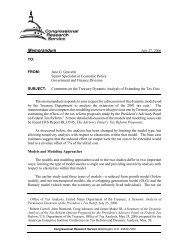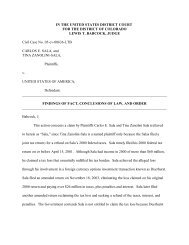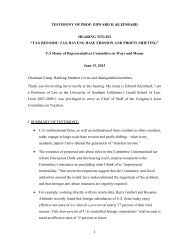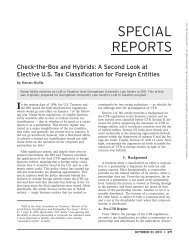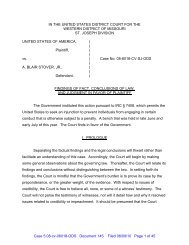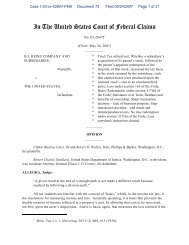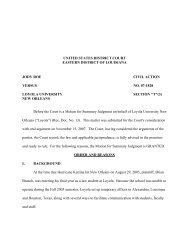motion to vacate
motion to vacate
motion to vacate
Create successful ePaper yourself
Turn your PDF publications into a flip-book with our unique Google optimized e-Paper software.
23. Mistretta did not present the interbranch removal power<br />
confronted in Bowsher. "Our paramount concern in Bowsher that Congress<br />
was accreting <strong>to</strong> itselfthe power <strong>to</strong> control the functions ofanother Branch<br />
is not implicated by a removal provision, like the one at issue here, which<br />
provides no control in one Branch over the constitutionally assigned mission<br />
ofanother Branch." Id. Significantly, Mistretta did not involve Presidential<br />
removal power over a judicial officer ofthe United States from his or her<br />
adjudica<strong>to</strong>ry office.<br />
24. By contrast, following Freytag, section 7433(f) violates the<br />
separation ofpowers by giving the President power <strong>to</strong> remove a judge<br />
exercising the judicial power ofthe United States in an adjudica<strong>to</strong>ry office.<br />
Bowsher indicates that an interbranch removal power, even when ostensibly<br />
limited only <strong>to</strong> "malfeasance, inefficiency, or neglect ofduty" - the very<br />
same language ofsection 7443(f) - would give the removing branch of<br />
government impermissible control over another branch's functions.<br />
25. Turning <strong>to</strong> the remedy assuming that this Court agrees that<br />
section 7443(f)'s removal power is unconstitutional, Bowsher -- which is the<br />
most on point opinion finding a violation ofan interbranch removal power-<br />
gives little guidance. That is because Congress anticipated the questionable<br />
constitutionality ofwhat it had enacted in that case and had provided for a<br />
16







